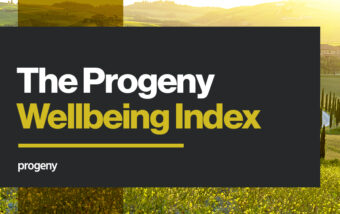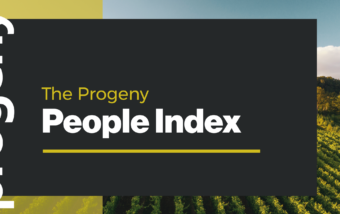This article has been updated with additional information from the Government on 9th April 2020. Please scroll to the bottom of the article for the latest updates.
To say our lives have altered dramatically and rapidly in recent weeks is an understatement. While the priority for all of us should be our health and the safety and wellbeing of our loved ones, the impact of the coronavirus has impacted on all spheres of our lives.
Those of us who remain fit and well are continuing to work, and endeavouring to stick as closely as we can to a normal routine. However, the unavoidable economic uncertainty is already throwing up questions and dilemmas for businesses the world over.
We have been inundated with enquiries from employers looking for guidance on the support available and particularly more information on how they can use the Chancellor’s Coronavirus Job Retention Scheme (CJRS) to help them keep and support their employees through these challenging economic conditions.
Here are some of the questions employers are asking and the answers we have provided. My colleagues Zee Hussain and Alistair Scott-Somers have also contributed on their respective specialist areas of employment law and corporate law.
What are the aims of the CJRS?
The Coronavirus Job Retention Scheme (CJRS) is a ground-breaking measure that will offer employers significant support over the coming months. The scheme is a temporary leave of absence and intended to avoid redundancies and protect jobs.
It takes the form of a government grant to reimburse businesses, through HMRC, for 80% of furloughed workers wage costs (capped at £2,500 per month). Furloughed workers are employees who remain on the payroll but who are temporarily not working during the coronavirus outbreak.
The scheme will be open initially for at least three months (from 1st March 2020) but extended for longer if necessary. The Chancellor’s said he is “placing no limit on the amount of funding available for the scheme. We will pay grants to support as many jobs as necessary”. What’s more, all UK businesses are eligible, small or large and also including charitable and non-profit business.
How does it work?
Employers will need to designate affected employees as ‘furloughed workers’ and submit this information, along with the workers’ earnings and further specified details, to HMRC. They can do this via a new online portal which HMRC are currently building.
Zee Hussain: “The grant operates as a reimbursement to the employer which means the employer will need to make the wage or salary payment to the furloughed worker in the first instance and then be reimbursed by HMRC. Employers will continue to pay the furloughed workers, but at the reduced scheme rate.”
When will it be operational?
As for when the scheme will be up and running, there is no date available yet but HMRC have emphasised they are working “urgently” to set the system up, noting that existing systems aren’t sufficient to use to make payments to employers. They have, however, said that they expect the first grants to be paid in a matter of weeks.
What is the employment status of furloughed workers?
To qualify for the scheme, employers will need to notify their employees that they are changing their employment status to ‘furloughed’.
However, changing the status of employees remains subject to existing employment law and, depending on the employment contract, may be subject to negotiation.
If employers have collective bargaining arrangements in place they must agree this change with the union in the usual way. Otherwise, employers may be able to vary contracts without worker consent.
Some contracts permit certain changes without worker agreement and in those cases employers can notify of this change in the usual way. In instances where employers cannot make this change to contracts without consent, they require the agreement of individual workers.
Zee Hussain: “In both scenarios we would recommend this is documented by gaining agreement via a letter or email where practicable. We can advise you on how you do this and provide a template agreement.”
Workers who are furloughed are not being dismissed or made redundant. This means furloughed employees are not entitled to redundancy payments. The CJRS will, however, cover workers who have already been laid off or dismissed. At the moment it is unclear whether employers will need to re-engage workers who have been dismissed to give them the protection of the scheme.
Furloughed workers are not entitled to receive a top-up of wages from their employers. Some employers may choose to top up the furloughed wage from 80% to 100%. Some may not be able to do so. Workers who receive a lower income as a result of these changes may be eligible for support through the welfare system, including universal credit.
Workers remain employed/engaged during this period. Which means most normal terms and conditions apply and, for example, holiday entitlement will continue to accrue.
What are the criteria for qualifying for the CJRS?
The Coronavirus Job Retention Scheme has been introduced to encourage businesses to follow the latest medical advice for Coronavirus and to help businesses who rely on physical interactions close their doors to the public.
Zee Hussain: “In cases where a business can carry on without those physical interactions by working remotely it should be business as usual. The policy doesn’t appear to be designed as a catch-all wage subsidy, applicable to everyone in the entire UK workforce.”
There is no requirement for a business to be closed to access the scheme. Which means employers should be able to furlough some workers and not others.
Are there any shortcomings of the CJRS?
The CJRS is an unprecedented and generous government lifeline to many but it’s not perfect. Businesses still have to pay their staff for March and claim the money back from the government.
Alistair Scott-Somers: “For many businesses, particularly in the retail sector, who are struggling with cash-flow issues and don’t need much to threaten their continued existence, the new scheme might not be able to help them fast enough, or provide enough in the way of assistance to ensure they keep their staff and stay operational.
“With a definite date for when the scheme will be up and running still to be announced, a two or three month wait before the money is reimbursed could be too long for some business.”
For businesses in these circumstances, it’s worth knowing that the Government is making alternative help available for employers to continue to pay employees while the scheme is being set up, by way of a loan. The Coronavirus Business Interruption Loan Scheme is available up to £5 million, with the government covering up to 80% of any losses with no fees. More information can be found at the link above or by contacting your bank manager for more detail.
Are there any areas of the CJRS needing more clarification?
There are some gaps and grey areas in the current plans which we hope will be filled in and clarified in the coming days. Employers are awaiting clarification on whether workers on sick leave can be furloughed in the same way as active workers.
More information is also need on how workers in receipt of Statutory Sick Pay (for coronavirus reasons or otherwise) are affected.
As employment/engagement continues most other normal terms and conditions apply. Employers will be seeking guidance on whether this will include pension obligations.
Are there additional support measures for businesses and employers?
The government has announced a number of further measures to help employers and businesses following the outbreak, including:
- 14 days of Statutory Sick Pay per employee refunded in full for businesses with fewer than 250 employees;
- structured support on tax liabilities; a £10,000 cash grant to small businesses, delivered by local authorities;
- a business rates holiday for retail, hospitality and leisure businesses in England for the 2020 to 2021 tax year.
Update as of 9th April 2020:
The Government has published further detail of their Coronavirus Job Retention Scheme, including new information on how apprenticeships, contracts and agency workers fit into the scheme.
Apprentices
Apprentices can be furloughed in the same way as other employees and can continue to train whilst furloughed. Apprentices must be paid at least the Apprenticeship Minimum Wage, National Living Wage or National Minimum Wage as appropriate for all the time they spend training. This means the employer must cover any shortfall between the amount they can claim for wages through the Coronavirus Job Retention Scheme and the appropriate minimum wage.
Fixed term contracts
Employees on fixed term contracts can be furloughed. Their contracts can be renewed or extended during the furlough period without breaking the terms of the scheme, however if the contract comes to an end, employers will no longer be able to make a claim.
Agency workers
Where agency workers are paid through PAYE, they are eligible to be furloughed and receive support through this scheme, including where they are employed by umbrella companies. Furlough should be agreed between the agency and the worker. As with employees, agency workers should perform no work for, through or on behalf of the agency that has furloughed them while they are furloughed, including for the agency’s clients.
Employees with multiple jobs
Employees who have more than one job can be furloughed for each job. Each job is separate, and the cap applies to each employer individually. If contractually allowed, employees are permitted to work for another employer whilst on furlough (permission should not be unreasonably withheld).
Length of furlough period
Any employees placed on furlough must be furloughed for a minimum period of three consecutive weeks. When they return to work, they must be taken off furlough. Employees can be furloughed multiple times, but each separate instance must be for a minimum period of three consecutive weeks.
Benefits and discretionary payments
Employers can claim for any regular payments they are contractually obliged to pay employees, e.g. overtime and commission payments. This includes regular money benefits such as car allowance/shift allowance. Discretionary payments are not included.
Employees classed as vulnerable
The intention under the updated guidance is to allow employers to furlough those staff classed as particularly vulnerable who are shielding themselves, and who cannot work from home and who would otherwise have been made redundant.
Employees with caring responsibilities
The updated guidance states that those employees unable to work because they have caring responsibilities resulting form COVID-19 can be furloughed i.e. to look after children.
Written consent required
As noted in the original, consent to furlough must be obtained in writing and, additionally, any correspondence retained for five years for HMRC audit purposes.
Scheduled holidays and Bank Holidays
If an employee is on holiday/annual leave or has a scheduled Bank Holiday while on furlough, they are entitled to still receive this holiday. Employers must ensure that any employee on holiday or a Bank Holiday is paid their full salary for that period of holiday.
More information on the above can be found on the Governments dedicated webpage for employees, employers and businesses.
If you would like further guidance for your business on all employment and HR issues throughout this period, please get in touch, we’d be happy to help.









